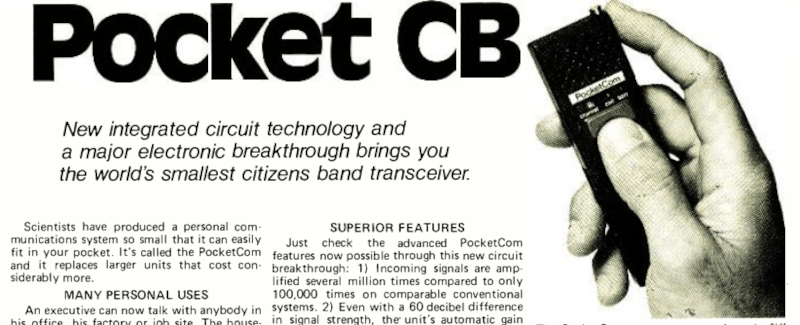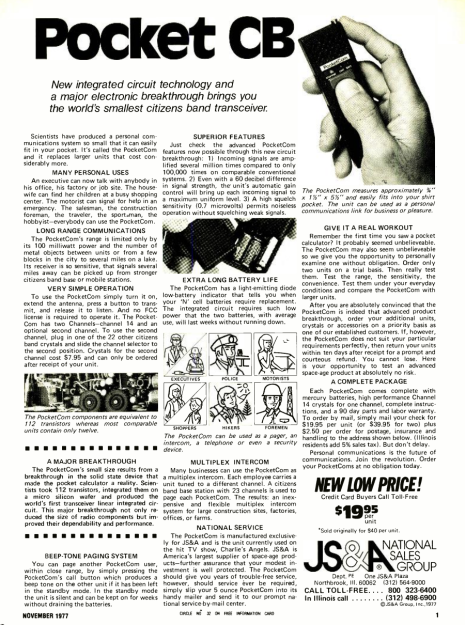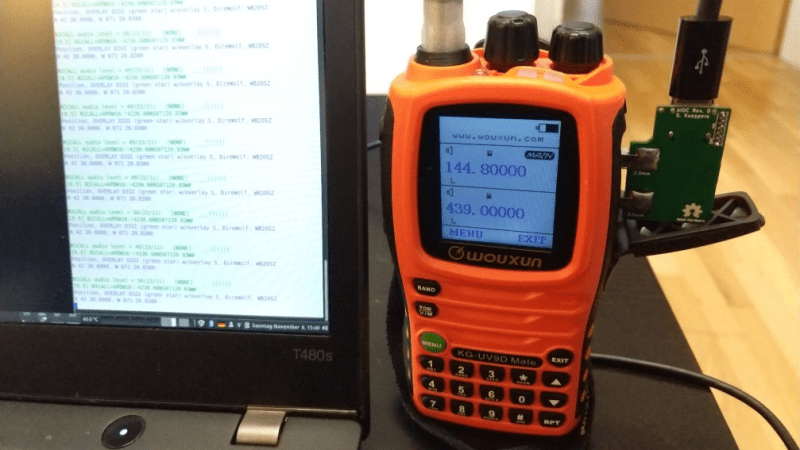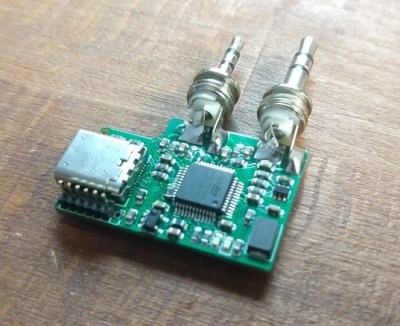
There was a time when one of the perks of having a ham radio in your car (or on your belt) was you could make phone calls using a “phone patch.” In the 1970s, calling someone from inside your parked car turned heads. Now, of course, it is an everyday occurrence thanks to cell phones. But in 1977, cell phones were nowhere to be found. Joseph Sugarman, the well-known founder of JS&A, saw a need and wanted to fill it. So he offered the “PocketCom CB” which was billed as the “world’s smallest citizens band transceiver.” You can see the full-page ad from 1977 below.
Remember that this is from an era when ICs that could operate at 30 MHz were not the norm, so you have to temper your expectations. The little unit was 5.5 in by 1.5 in and less than an inch thick. That’s actually not bad, but you had — optimistically — 100 mW of output power. They claimed the N cell batteries would last two weeks with average use, but we imagine a lot less as soon as you start transmitting. The weight was 5 oz, but we suspect that is without the batteries.
The device had a crystal for channel 14, and you could buy another crystal to get a second channel. Given that the unit was selling for about $40 to $20, it was telling that the extra crystal cost $8. We heard that over 250,000 of these were sold. The ad copy mentions they were used on the TV show Charlie’s Angels, but we can’t picture how that happened. It also mentioned it can be used as a pager, an intercom, a telephone, or a security device.
In operation, the devices were pretty simple. The 40″ antenna, when pulled out, would make the unit a bit more cumbersome. We found a relatively recent review on the CB Gazette from someone who picked up two of these on the used market. Seemed like they did work, although they were probably no better than a kid’s walkie-talkie.
Many hams convert CBs to the 10-meter band or even the 6-meter band, and we wonder if a crystal would pull these to 10 meters. Before cell phones, people thought we needed bigger towers, more power, and more channels. Turns out, it is just the opposite.


 https://github.com/skuep/AIOC
https://github.com/skuep/AIOC